Physiology Friday #274: Post-Exercise Hot Baths Mimic the Effects of High-Altitude Training
Six weeks of passive heat exposure elicited several classic adaptations once thought to be exclusive to exercising in a low-oxygen environment. Does it translate to improved performance?
Greetings!
Welcome to the Physiology Friday newsletter.
If you’ve jumped on the creatine bandwagon (who hasn’t) but aren’t sure where to start, I suggest you try out Create—the first “modern creatine” brand. They sell a wide range of gummies (including a new sour cherry flavor), flavored creatine monohydrate single-serve packets, and even a daily performance mushroom & greens gummy (my personal favorite).
This week only, they’re giving my audience 25% off of their entire order. So stock up!
Details about the other sponsors of this newsletter including Ketone-IQ, Examine.com, and my book “VO2 Max Essentials” can be found at the end of the post. You can find more products I’m affiliated with on my website.
There’s an old saying in endurance sports that “humidity is the poor man’s altitude.” A new study lends some credence to this idea.
Typically, when endurance athletes want to improve performance at altitude, the solution is to train at altitude. This boosts red blood cell production and helps the body cope with lower oxygen levels. It’s a classic strategy—and it works.
But let’s be real—most of us who aren’t professional athletes have neither the time nor the financial resources to do several stints at altitude per year in the lead-up to our goal event.
Could another stressor—heat—offer similar physiological benefits for sea-level dwellers?
That’s the promise behind something known as cross-adaptation.
It’s the idea that training adaptations from one stressor (like heat) can carry over to another (like altitude).
On the surface, heat and altitude seem unrelated. However, physiologically, both challenge the body’s ability to deliver and utilize oxygen effectively—heat through increased cardiovascular and thermoregulatory strain, and altitude through reduced oxygen availability.
In theory, this means that not only could passive heat exposure help one perform better in hot and humid conditions, but perhaps even in more temperature conditions or even the low-oxygen conditions of high altitude. It’s a strategy I’ve been using for several years and one I attribute to some of the improvements in my race times from the 5k to the marathon.
A new, compelling study provides evidence that post-exercise hot-water immersion might bridge this gap, offering altitude-like adaptations that might translate not only to high-altitude but also sea-level performance.
Before we dig into the study, I think it would be prudent to give a brief primer on the physiological benefits of heat exposure.
Why Does Heat Stress Produce Altitude-Like Adaptations?
Repeated heat stress—especially after exercise—elevates core temperature significantly. This elevation triggers a cascade of adaptive responses at the cellular level. It activates heat shock proteins (HSPs), which protect cells from thermal damage, stabilize our body’s proteins, and even influence gene expression related to endurance adaptations. That’s great not just for performance, but also long-term health and longevity (and one reason why biohackers everywhere love the sauna so much).
Critically, heat stress might mimic some aspects of mild hypoxic stress. One possible pathway involves the activation of hypoxia-inducible factor-1α (HIF-1α), a cellular signaling molecule typically activated by low-oxygen conditions.
Even in the absence of actual hypoxia, prolonged elevations in body temperature and metabolic stress can activate HIF-1α, driving adaptations such as increased erythropoietin (EPO) production and enhanced red blood cell synthesis—exactly what we see with altitude training.
In addition to these cellular adaptations, passive heat exposure effectively induces several classic signatures of heat acclimation—a lower core body temperature during exercise, an earlier onset of sweating, and an increase in red blood cell and hemoglobin mass, all of which allow us to perform better in the heat and thermoneutral conditions (or just last through a hot Texas summer…something I’m gearing up for).
Additionally, repeated heat exposure improves cardiovascular stability. In a way, it mimics exercise by increasing sweat rate, blood flow, and heart rate. That’s why sitting in a sauna eventually feels a bit like a hard workout (although it’s passive rather than active). Over time, repeated training expands blood volume and optimizes cardiovascular function, which helps you deliver oxygen more effectively under challenging conditions like extreme heat or high-intensity exercise.
This new study, however, asked a different question—do these adaptations cross over to a different type of environmental stressor, namely, hypoxia (low-oxygen conditions representative of high altitude)?1
To investigate this, researchers took 20 recreationally trained adults with average aerobic fitness (VO₂ peak of ~47 mL/kg/min) and split them into two groups. Both groups completed a structured high-intensity interval training program: three times per week, they performed four 4-minute cycling intervals at approximately 90% of their maximal heart rate.
Immediately after these cycling sessions, one group immersed themselves in hot water (42°C/107℉) for 40 to 50 minutes, five times per week. The other group—the control group—immersed themselves in thermoneutral water (34.5°C/94℉).
Before and after the 6-week intervention, researchers tested participants under hypoxic conditions (13% oxygen, simulating about 4,300 meters altitude) and measured their VO₂ peak, ventilatory thresholds, oxygen saturation, core temperature, ventilation, and hemoglobin concentration. The primary performance measure was a time-to-exhaustion test conducted at 80% of their VO₂ peak under hypoxic conditions. The participants also performed two brief bouts (5 minutes each) of exercise in normoxia (normal oxygen concentrations of ~20%) and hypoxia at 40% and 60% of their VO₂ peak.
Here’s what they found:
The group using hot-water immersion saw some remarkable improvements. Their time-to-exhaustion under hypoxic conditions improved significantly more than the control group—191 seconds (a 35% increase) versus 103 seconds (a 25% improvement)—and they also had a higher total power output throughout the test. So, while both groups got fitter (thanks to the high-intensity interval training), the extra boost from hot baths clearly elevated their resilience under low-oxygen conditions.
However, they performed similarly (i.e., no performance difference) when oxygen levels were normal—peak power output was the same between groups (324 W vs. 313 W).
At the physiological level, the hot-water immersion group also saw significant increases in hemoglobin concentration (5.3% vs. just 2% in the control group). This matters: increased hemoglobin improves your body’s oxygen-carrying capacity, which is critical at altitude (or sea level) where oxygen availability is compromised.
Another crucial adaptation involved thermoregulation. The hot-water group exhibited consistently lower core temperatures both at rest and during exercise after the intervention. Their core temperatures were also lower after the hot water immersion sessions—classical signs that the body had become more heat-adapted. Why is this important? A lower core temperature reduces cardiovascular and thermoregulatory strain. That frees up resources to better manage oxygen delivery and metabolic demands during exercise. Moreover, this group showed improved respiratory efficiency under hypoxia, with lower tidal volumes and ventilation (breathing) at the same workload. Essentially, their respiratory muscles were less burdened, allowing them to breathe easier and allocate energy more efficiently during exercise.
There is one key difference between altitude and heat that should be discussed in the context of this study—and it involves hemoglobin. Heat exposure (i.e., hot-water immersion) increased hemoglobin concentration in this study but didn’t increase plasma volume (plasma is the liquid portion of blood that carries red and white blood cells). In other words, participants had a greater mass of hemoglobin per unit of blood. Altitude, on the other hand, generally leads to increases in both hemoglobin mass and plasma volume—enhancing total blood volume.
What all of this means is that while some of the adaptations to heat mimicked those of high-altitude exposure, they aren’t identical. It is interesting to note that traditionally, short-term heat exposure expands primarily plasma volume, but as we’ve seen, longer protocols (over several weeks) seem capable of stimulating red cell mass expansion—a crucial adaptation usually reserved for altitude training.
Leverage Heat Training for Performance
If you’re training for a race at altitude, or simply aiming to bolster your overall endurance capacity or general fitness, post-exercise hot-water immersion is a compelling tool. If, like me, you prefer the sauna as your exposure of choice, that likely works just as well as long as the temperature and duration are high enough. Here’s how you could practically implement this protocol:
After your hard sessions (ideally three or more times per week), immerse yourself in hot water (around 42°C or 107°F) up to your chest level for about 40 to 50 minutes. Be prepared—it’s not easy or comfortable, and hydration before and during is critical. Some hot tubs don’t even reach this temperature.
If you’re choosing to use a lower temperature, you might need to extend the duration up to an hour. If you’re not able or willing to replicate the protocol used here, getting in a hot bath (or sauna) for 15–20 minutes right after your workout can yield similar adaptations.
Beyond the immediate implications for training, this study challenges our conventional assumptions about adaptation and specificity. We often think in rigid terms—train at altitude for altitude performance, heat for hot conditions. But biology is more nuanced. Our entire body exhibits flexibility in adapting to stressors. Heat exposure prepares us for the heat and also broadly enhances physiological resilience.
Heat exposure is yet another tool to add to your training toolkit—just don’t forget the basics of training hard, eating right, and sleeping soundly.
Thanks for reading. See you next Friday.
~Brady~
The VO2 Max Essentials eBook is your comprehensive guide to aerobic fitness, how to improve it, and its importance for health, performance, and longevity. Get your copy today and use code SUBSTACK20 at checkout for a 20% discount. You can also grab the Kindle eBook, paperback, or hardcover version on Amazon.
Examine.com: Examine is the largest database of nutrition and supplement information on the internet.
Ketone-IQ is high-performance energy in a bottle. I use it for post-exercise recovery along with enhancing focus, mood, and cognition. Take 30% off of your order.


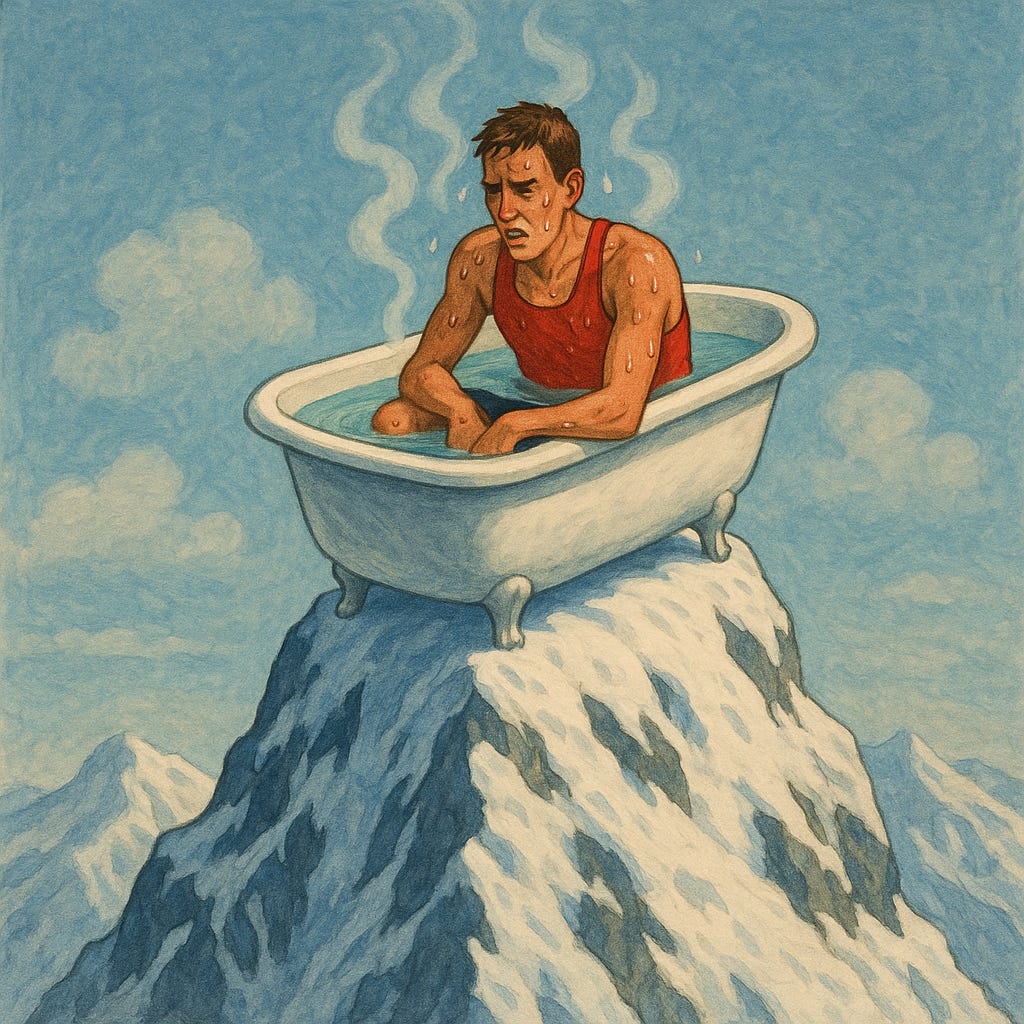
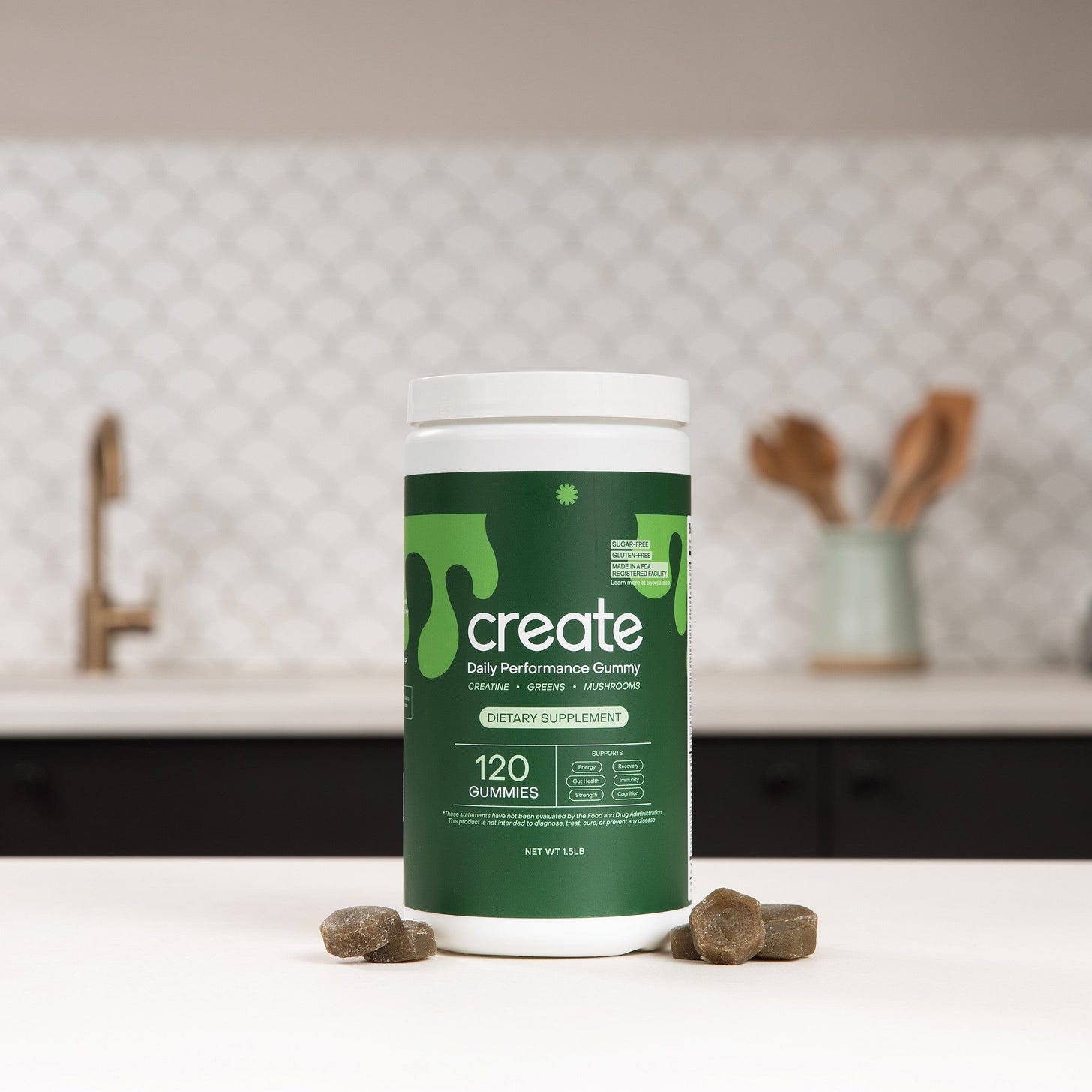
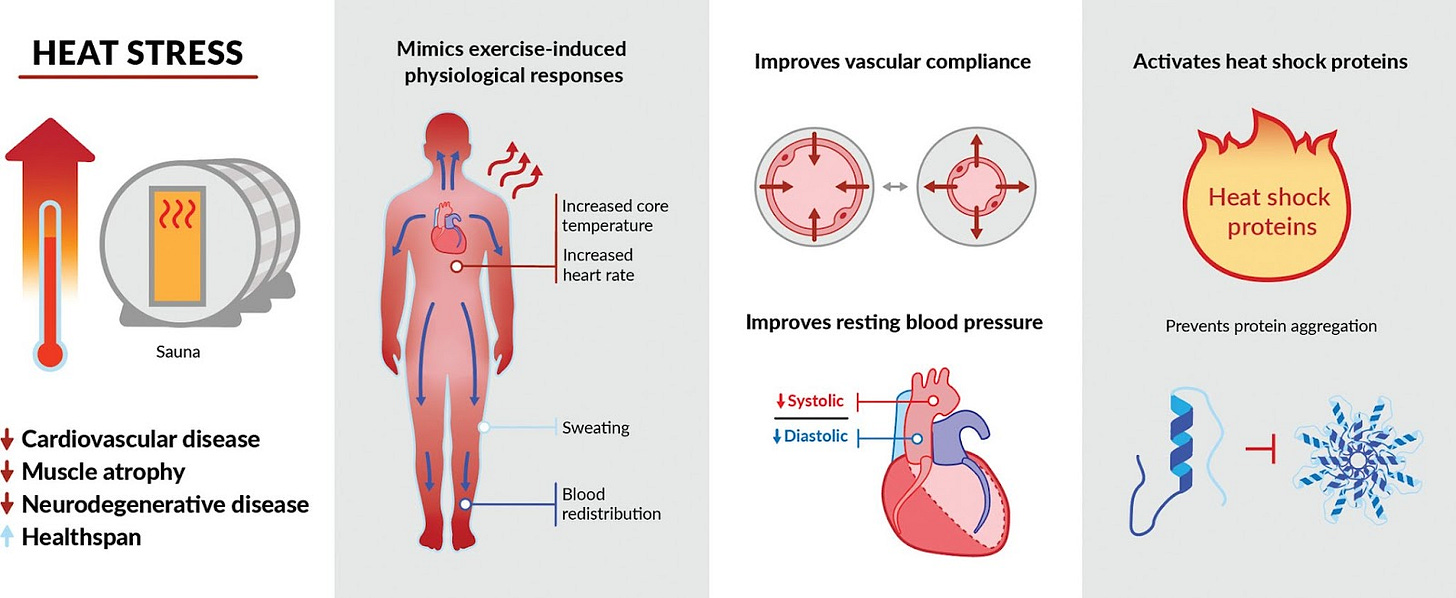
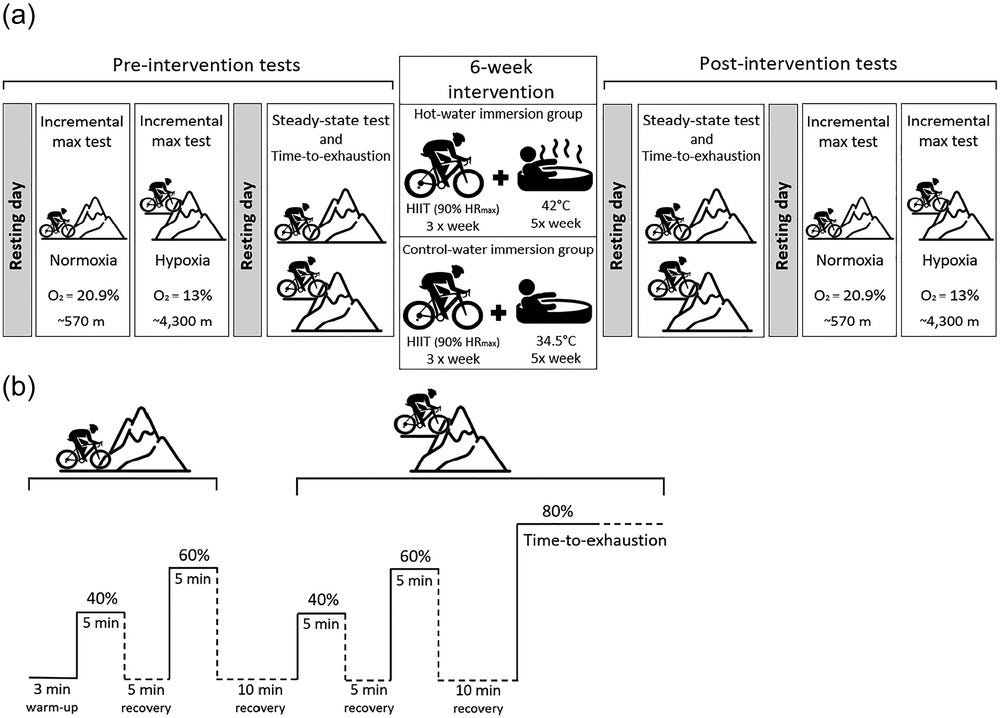
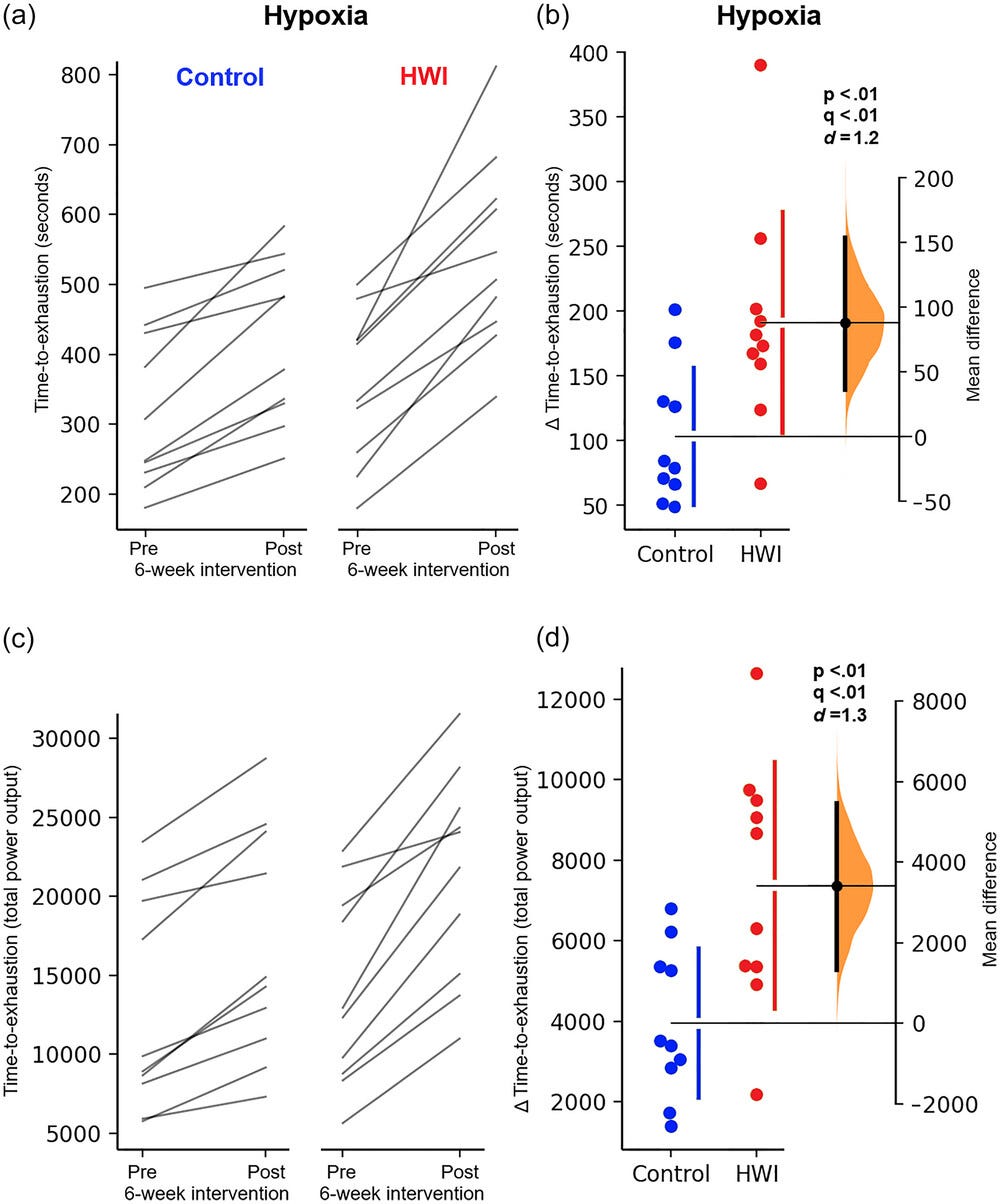
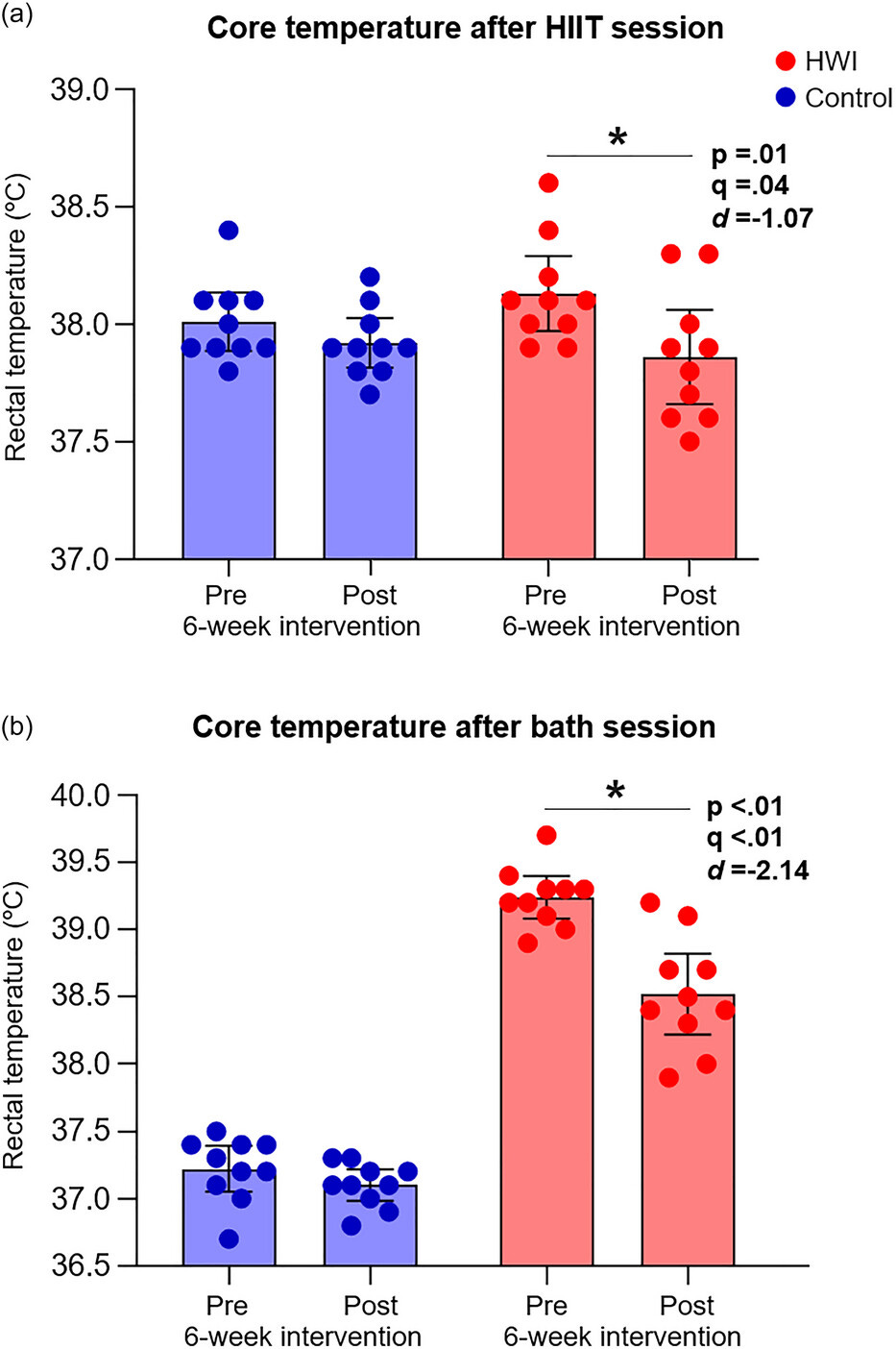
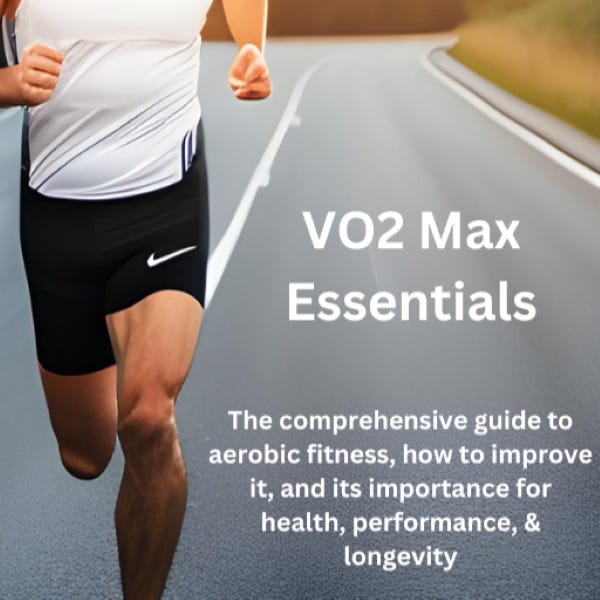


I do sauna 5x/week but also lately go to hot yoga classes 2-3 days a week. Hot yoga is 104 degrees. Perhaps the fact that the exercise is in the heat makes the
adaptive impact of the heat increased ?
Years ago I did the 'rich man workout' twice a week on my days off. Steam, swim light laps, dry sauna, swim light laps, cold plunge, repeat for sometimes 4-5 hours. I honestly believe the routine kept me in top condition. I worked long hours at night in smoke-filled rooms inside the casino. I was exposed to just about everything imaginable.
I started back in a dry sauna about a month ago. I'm working up to 30-minutes five days a week.
I do light exercise in there to help me relax and work up more of a sweat.
Thoughts on red light therapy? I haven't found anything affordable that measures up to what I've read, so any suggestions or thoughts on this would be interesting.
Great article, thank you.